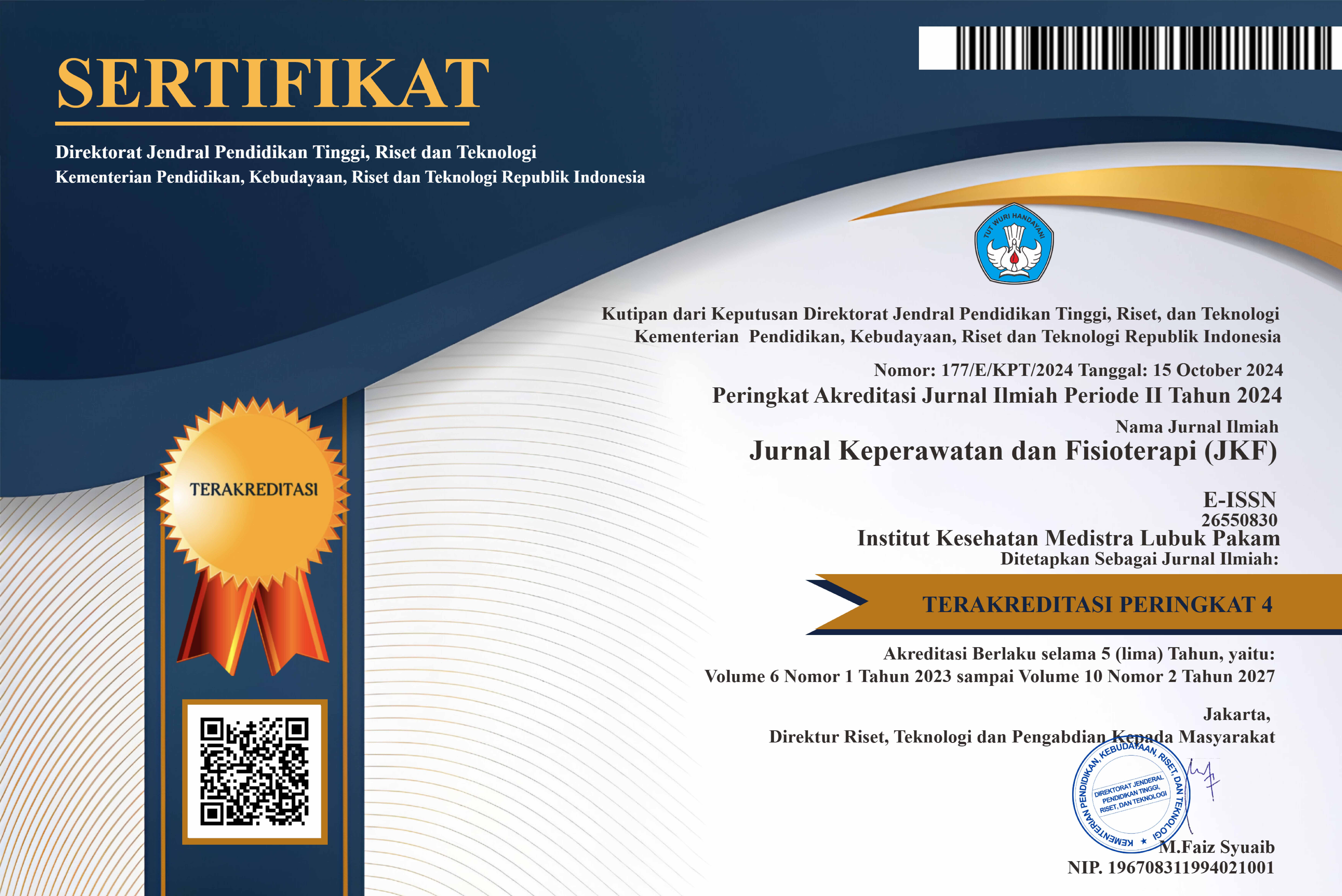The Relationship of Physitherapy Services Quality at The Homecare Level to Patient Satisfaction in Practice Independent Physiotherapy Malang Raya
DOI:
https://doi.org/10.35451/jkf.v5i2.1623Keywords:
Kualitas pelayanan, Kepuasan, Klinik mandiri, Fisioterapi homecareAbstract
In 2021 there will be an increase in population in Indonesia with East Java being the second most populous in Indonesia and Malang Raya being one of the cities with the highest number of people according to data from the Ministry of Health. This increase in population has resulted in the phenomenon of the emergence of many independent health service clinics, one of which is an independent physiotherapy clinic, especially with homecare services to meet the needs of public health services. Providing independent health services needs to pay attention to service quality for patient satisfaction. So it is necessary to know whether there is a relationship between the quality of service at the independent clinic and the satisfaction of service users or patients. This study used an observational approach with a cross-sectional design with 37 respondents or samples in filling out two questionnaires for each variable, namely the servqual questionnaire and the medrisk questionnaire for 5 weeks of study. The results of the Shapiro-Wilk test for service quality at independent physiotherapy clinics were 0.059>0.005 and patient satisfaction levels were 0.078>0.005, which means that the data were normally distributed. The Pearson correlation test is 0.000 <0.005, which means there is a relationship between the two variables. There is a strong relationship between the quality of physiotherapy services at the homecare level and patient satisfaction in the Malang Raya self-help physiotherapy practice as seen from the Pearson correlation value of 0.618. For future researchers, this research can be continued by increasing research time and making the data in this study a good reference for students, educators, and physiotherapy colleagues.
Downloads
References
Palliative care therapy (HAPPY) for COPD Patients in the community setting: A Rapid Review. International Journal of Nursing and Health Services (IJNHS), 5(1). https://doi.org/10.35654/ijnhs.v5i1
Kemenkes. (2021). PROFIL KESEHATAN INDONESIA TAHUN 2020.
Kuswardani, Purwoko, A. J., & Wibowo, D. B. (2018). Pelaksanaan Perlindungan Hukum Terhadap Pasien Sebagai Konsumen Jasa dan Fisioterapis Dalam Pelayanan Fisioterapi Mandiri di Kota Semarang. Jurnal Fisioterapi Dan Rehabilitasi (JFR), 2(2).
Leny, N. B. (2022). Studi Penggunaan Obat Pada Pasien Osteoarthritis Usia Lanjut di Instalasi Rawat Jalan Rumah Sakit Umum Daerah Provinsi NTB Periode 2019. Jurnal Ilmu Kefarmasian, 3(2).
Onyeso, O. K. K., Umunnah, J. O., Ezema, C. I., Anyachukwu, C. C., Nwankwo, M. J., Odole, A. C., Oke, K. I., & Bello, B. (2020). Profile of practitioners, and factors influencing home care physiotherapy model of practice in Nigeria. Home Health Care Services Quarterly, 39(3), 168–183. https://doi.org/10.1080/01621424.2020.1754315
Sinaga, J., & Sembiring, E. (2017). Mutiara Homecare. 23(4).
Trimayati, H., Sholichah, I. F., Alfinuha, S., & Trimayati, R. H. (2021). PERBANDINGAN TINGKAT KEPERCAYAAN DIRI DITINJAU DARI JENIS KELAMIN PADA SISWA SMA NEGERI 1 CERME.
Additional Files
Published
Issue
Section
License
Copyright in each article is the property of the Author.


























